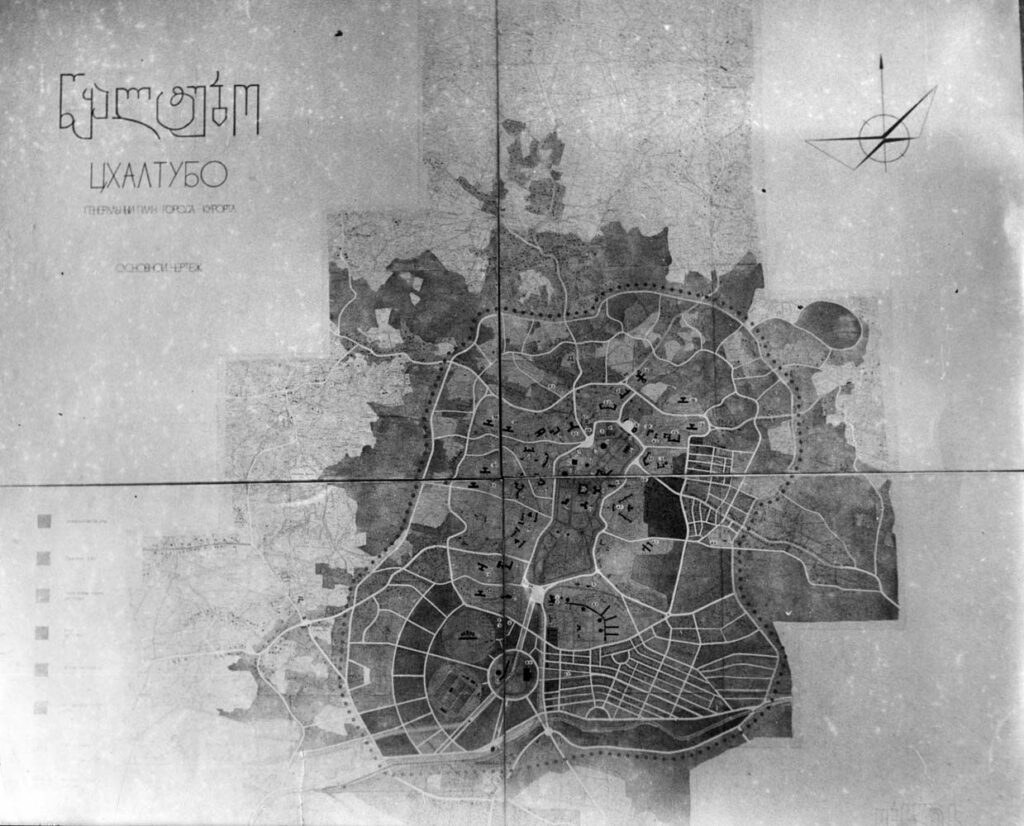25 General regulation plan
architects: Ioseb Zaalishvili, Valerian Kedia
project: 1953

The first general scheme of Tskaltubo was developed in 1932. The design process was led by architect Nikoloz Severeov. The engineer Petre Mamradze also actively participated in the development of the scheme, who in turn supervised the hydro-technical works of Tskaltubo. The scheme was later revised by Nikoloz Severov, Tatsyana Beyer and Stephan Satunts, and formed the basis for the further development of the resort. Taking into consideration the natural conditions and topography of the area, the development was based on the radial – scheme. The main baths were allocated in the center of the resort, on a flat park zone, in close proximity to mineral water springs. The road system, the sanatoriums on the slopes and the housing districts were circularly surrounding it. Between 1950 and 1951 at the Scientific-Research Institute of Kurortology, Ioseb Zaalishvili and Valerian Kedia developed a new general plan for Tskaltubo. The plan was approved in 1953. The new plan mostly followed the principle of radial planning envisaged by the previous project. On the basis of this 1953 plan, individual curative facilities were gradually located over the course of three decades, until the 1980‚s. The aim was to create a harmonious spa environment. As in other developed spa locations, the main principle in Tskaltubo was to protect the healing resources (springs) and the natural environment, which provide as much spa treatment as the mineral waters themselves. In order to prevent the degradation of these resources, it is necessary to organize the transport in the area and the location of the objects themselves in such a way that the environment does not suffer. Zaalishvili has created a circular road through the baths, inside which the healing springs and balneotherapy facilities are located, and outwards from it all the accommodation facilities and services of the baths. Overall, however, the large accommodation capacities of the baths are not interconnected, and there is no transition between the balneotherapy operations and the accommodation in the form of covered routes or corridors in continuous operational units. This system of spa care, common in Europe, has not been practically applied in Tskaltubo. The master plan was revised once again 1983 by a team of architects at the bureau of Tbilisi State Academy of Arts, led by Architect Ioseb Zaalishvili.
